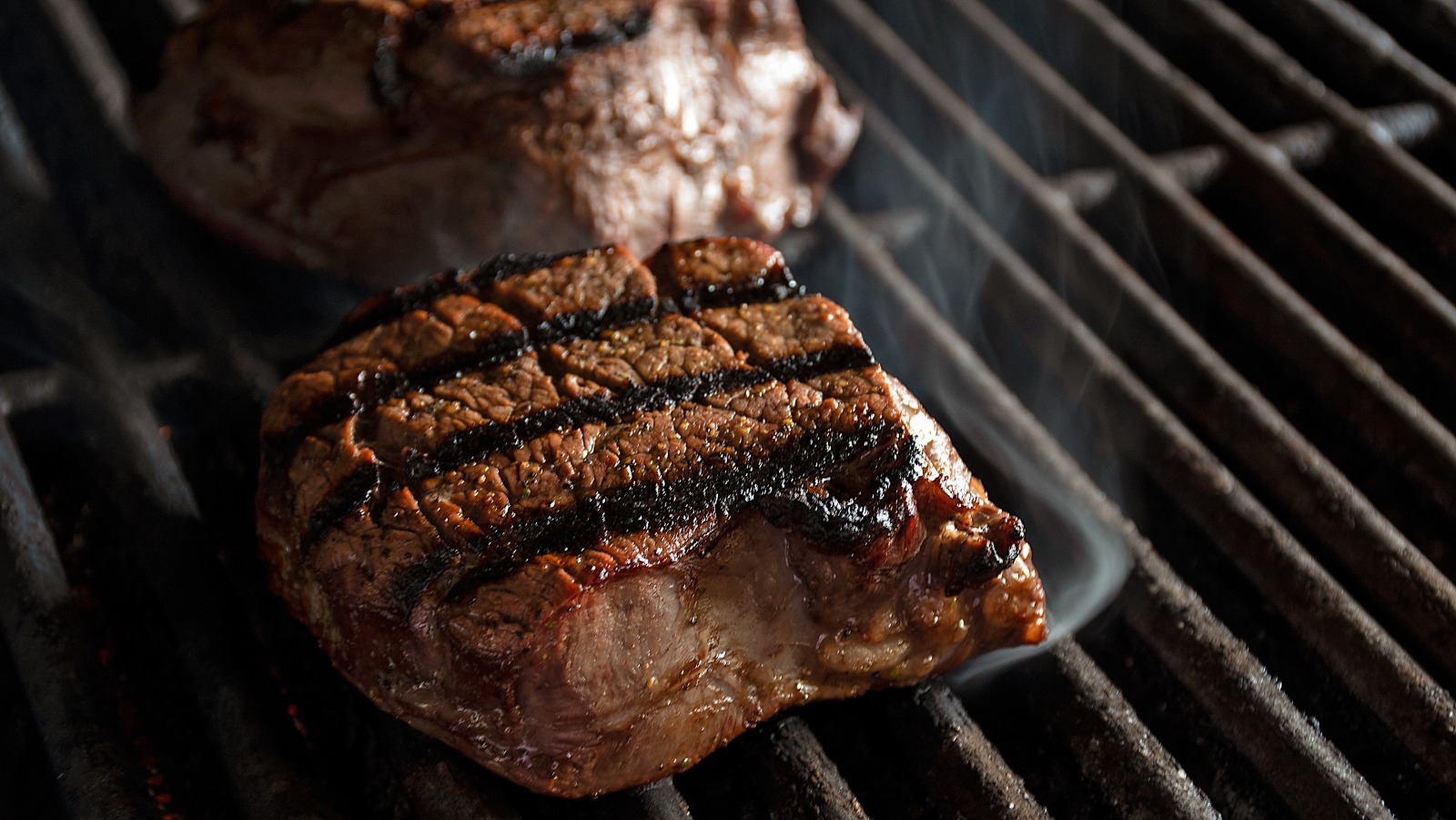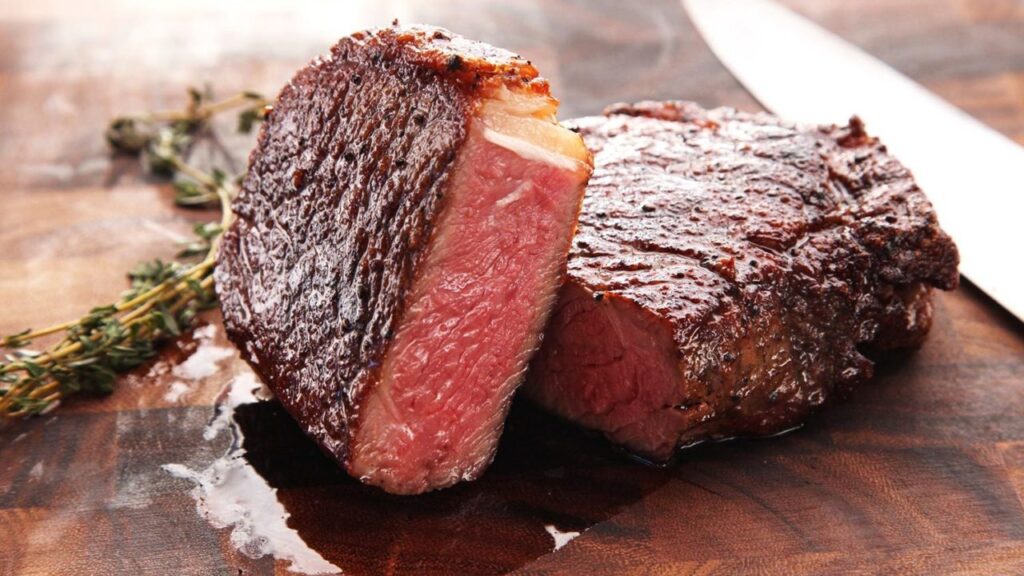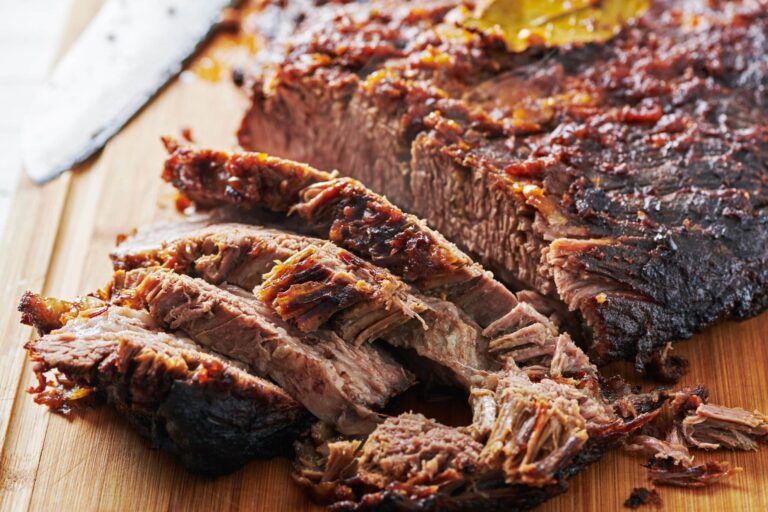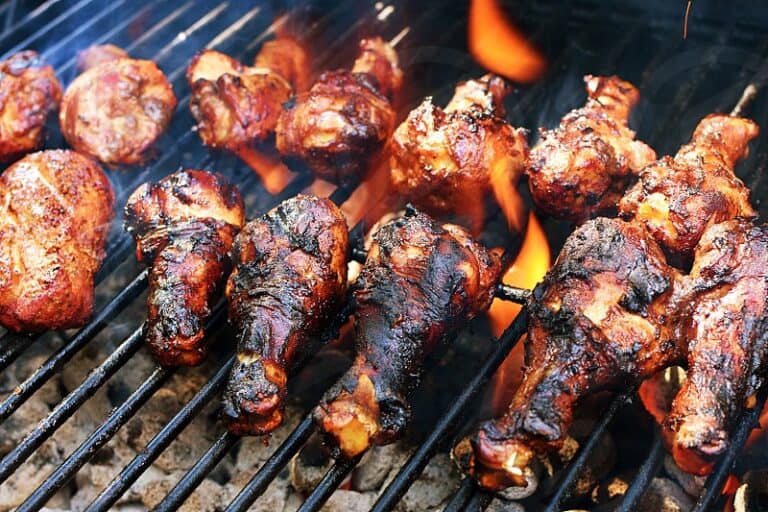How Long BBQ Filet Mignon
Grilling filet mignon to perfection is an art that combines timing, technique, and a touch of culinary intuition. This prized cut, known for its tenderness and rich flavor, deserves special attention on the BBQ. In this guide, we’ll walk you through the essential steps to ensure your filet mignon turns out succulent and mouthwatering.
From selecting the finest cuts to understanding the nuances of grill temperatures and cooking times, we’ve got you covered.
Whether you’re aiming for a rare delicacy or a well-done feast, our comprehensive approach will help you achieve the ideal doneness.
So grab your tongs, fire up the grill, and get ready to impress your guests with a gourmet BBQ experience. Let’s explore how long BBQ filet mignon is.
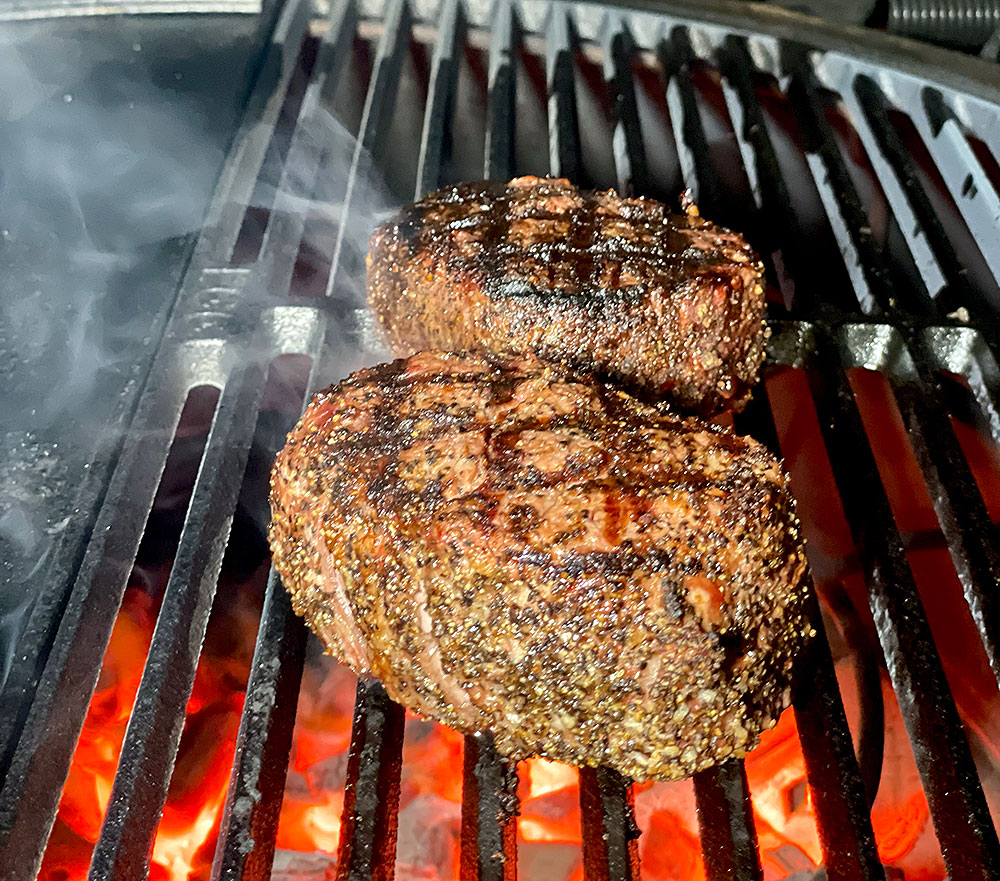
What is Filet Mignon?
Filet mignon is the name given to small, tender cuts of beef taken from the smaller end of the tenderloin. Its name, French for ‘cute fillet’ or ‘dainty fillet,’ hints at the premium nature of the meat. This cut is prized for its buttery texture and subtle flavor, which make it a favorite for special occasions and gourmet cooking.
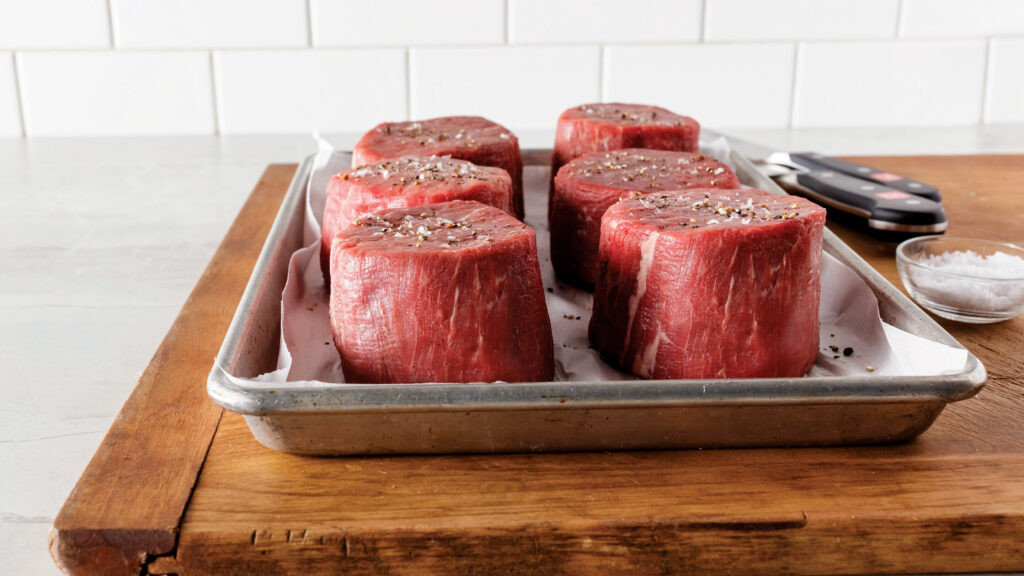
Selecting Quality Meat
When it comes to BBQing filet mignon, the quality of the meat is paramount. Here’s how to ensure you’re choosing the best:
- Look for marbling: The small streaks of fat within the meat are known as marbling. They melt during cooking, adding flavor and juiciness.
- Opt for uniformity: Choose cuts that are consistent in thickness to ensure even cooking.
- Check the color: Fresh filet mignon should have a bright, cherry-red hue. Avoid any cuts that look dull or have dark spots.
- Feel the firmness: The meat should be firm to the touch and spring back when pressed.
- Know the grade: Beef is graded based on quality, with USDA Prime being the highest, followed by Choice and Select. Prime offers the most marbling and is typically the most tender and flavorful.
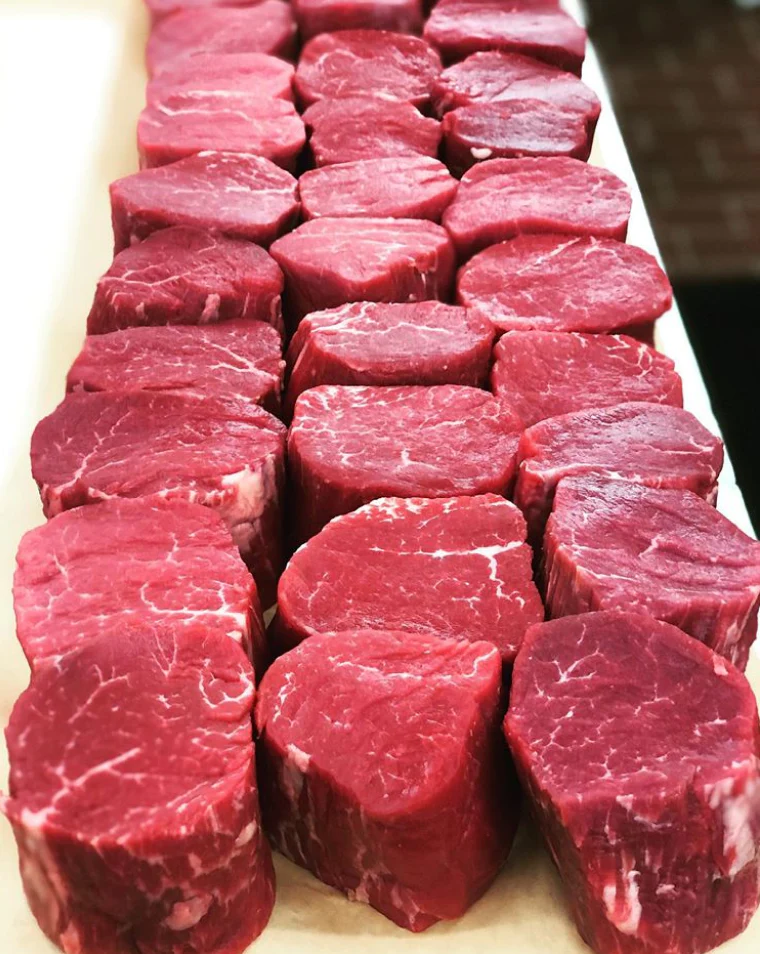
Preparation Before BBQ
Before the flames are even lit, the preparation of your filet mignon sets the stage for the flavors and textures that will follow. Here’s how to prepare your steak for the BBQ:
Seasoning the Filet Mignon
The delicate flavor of filet mignon benefits from simple seasonings. Here’s a straightforward approach:
Salt and pepper: These are the essentials. Generously season both sides of the steak to enhance its natural flavors.
Herbs and spices: Consider adding thyme, rosemary, or garlic powder for an aromatic touch.
Marinades: If you prefer a marinade, keep it light. A mix of olive oil, lemon juice, and herbs can complement the steak without overpowering it.
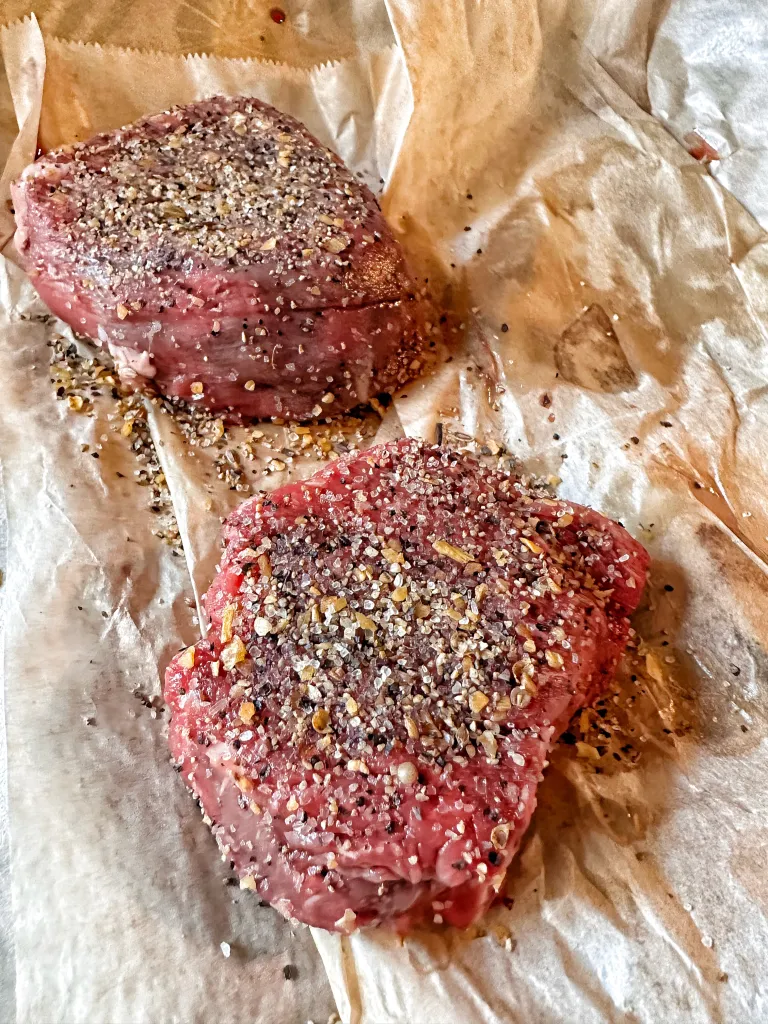
Remember, the key is to enhance, not mask, the filet mignon’s natural taste.
Preparing the Grill
A great BBQ starts with a well-prepared grill. Follow these steps to set up your grilling station:
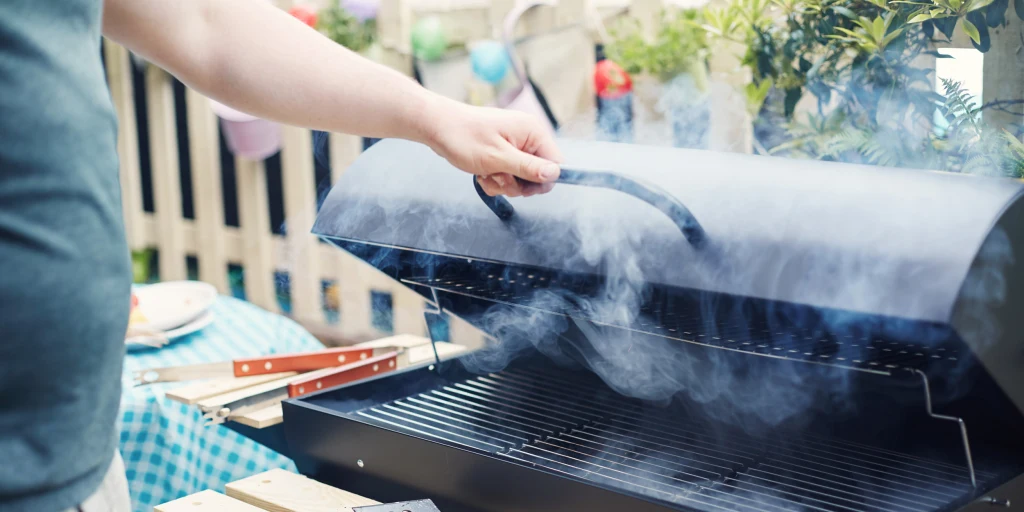
- Clean the grill: Begin with a clean cooking surface to prevent sticking and ensure even cooking.
- Preheat: Bring your grill to the right temperature before adding the steak. For filet mignon, medium to high heat is ideal.
- Oil the grates: Lightly oiling the grill grates ensures your steak doesn’t stick and creates beautiful sear marks.
Grilling Techniques
Grilling filet mignon is not just about cooking; it’s about crafting an experience. The right techniques can transform a good steak into an extraordinary meal. Here’s how to do it:
Direct vs. Indirect Heat
Understanding the heat zones on your grill is crucial for cooking filet mignon:
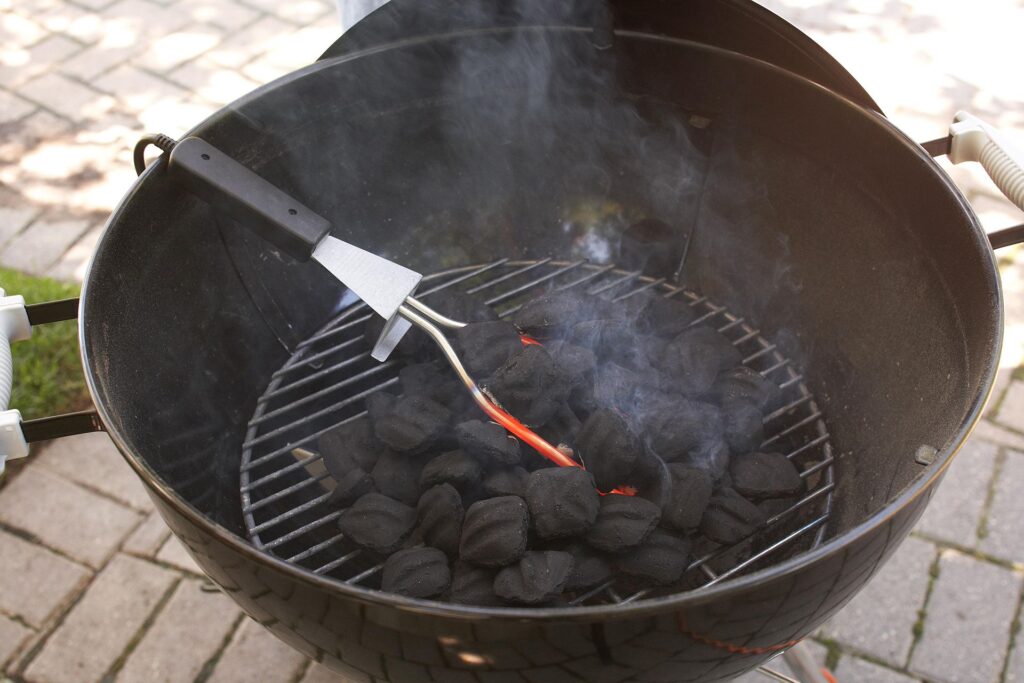
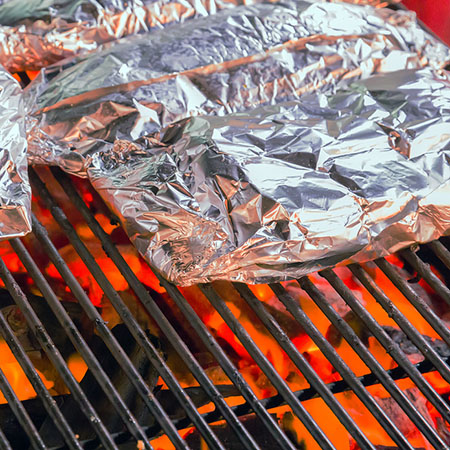
- Direct heat: This method cooks the meat directly over the flame, providing a sear that locks in juices. It’s ideal for creating those coveted grill marks and a crusty exterior.
- Indirect heat: Cooking away from the flame allows the steak to cook through more slowly, which is perfect for thicker cuts or finishing off after searing.
For the best results, start with direct heat to sear the outside, then move to indirect heat to reach the desired internal temperature without overcooking.
Grill Temperature and Setup
The perfect temperature is key to grilling filet mignon:
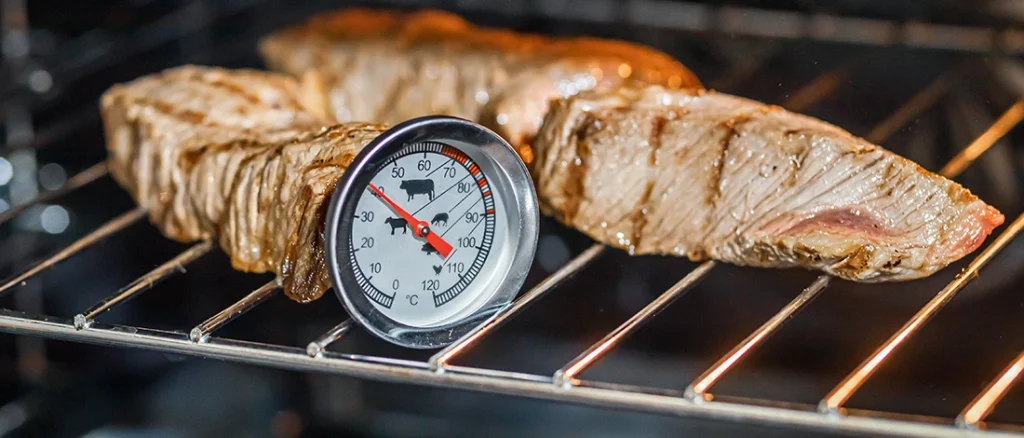
- Medium-high heat: Aim for a grill temperature of around 400°F to 450°F. This range is hot enough to sear the outside while still cooking the inside to perfection.
- Preheating: Always preheat your grill for 10 to 15 minutes. A hot grill ensures a good sear and helps prevent sticking.
- Grill setup: If using a charcoal grill, arrange the coals to create a hot zone for direct heat and a cooler zone for indirect heat. For gas grills, adjust the burners accordingly.
Cooking Time Guidelines: How Long BBQ Filet Mignon?
Cooking filet mignon on the BBQ to the perfect degree of doneness is a matter of precise timing. Here’s what you need to know to nail it every time:
Rare to Well-Done: A Timing Chart
The following chart provides a general guideline for cooking times based on the thickness of your filet mignon and your desired level of doneness:
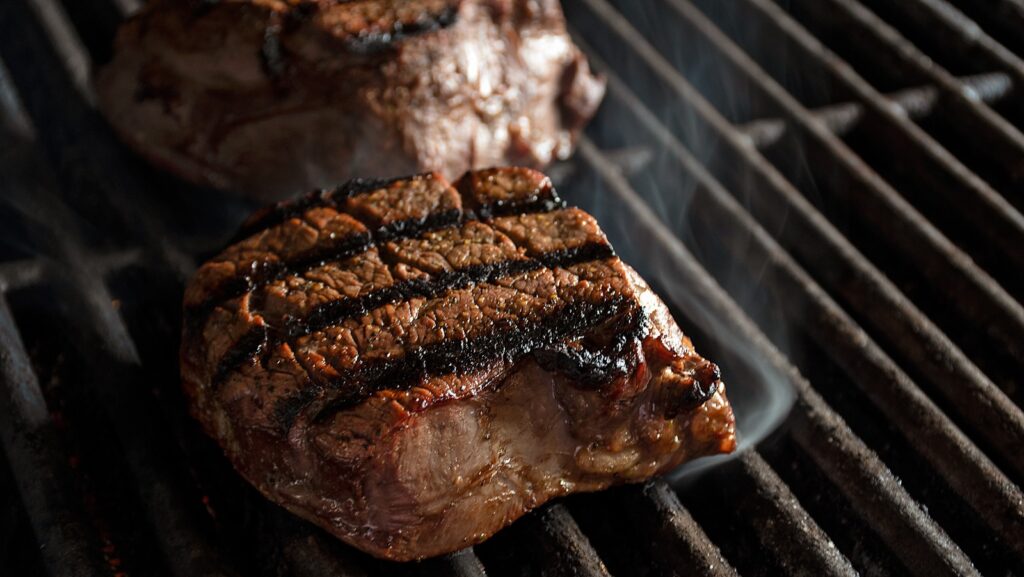
- 1-inch thick
- Rare: 4-5 minutes per side
- Medium-Rare: 5-6 minutes per side
- Medium: 6-7 minutes per side
- Medium-Well: 7-8 minutes per side
- Well-Done: 8-9 minutes per side
- 1.5-inch thick
- Rare: 5-6 minutes per side
- Medium-Rare: 6-7 minutes per side
- Medium: 7-8 minutes per side
- Medium-Well: 8-9 minutes per side
- Well-Done: 9-10 minutes per side
Remember, these times are approximate and can vary based on specific grill temperatures and external conditions.
Factors Affecting Cooking Time
Several factors can influence how long your filet mignon should stay on the grill:
- Size and thickness: Thicker cuts require more time, while thinner ones cook faster.
- Starting temperature: Meat at room temperature cooks more evenly than cold meat straight from the fridge.
- Grill type and heat source: Charcoal grills can have hot spots, and gas grills may have a more even heat distribution.
- External temperature: On colder days, it may take longer to cook your steak to the desired level of doneness.
Testing for Doneness
Ensuring your filet mignon is cooked to your preferred level of doneness is the key to a satisfying BBQ experience. Here’s how to test for doneness without cutting into your steak:
Using a Meat Thermometer
The most reliable method for testing doneness is using a meat thermometer. Here are the internal temperatures to look for:
- Rare: 120-125°F (49-52°C) – Center is bright red, pinkish toward the exterior portion
- Medium Rare: 130-135°F (54-57°C) – Center is very pink, slightly brown toward the exterior
- Medium: 140-145°F (60-63°C) – Center is light pink, outer portion is brown
- Medium Well: 150-155°F (65-68°C) – Not much pink, mostly brown throughout
- Well Done: 160°F (71°C) and above – Steak is uniformly brown throughout
Insert the thermometer into the thickest part of the steak to get an accurate reading.
The Touch Test
For those without a thermometer, the touch test is a classic method:
- Rare: Feels soft and spongy with slight resistance
- Medium Rare: Feels a bit firmer and springy
- Medium: Offers moderate resistance
- Medium Well: Feels firm with a little give
- Well Done: Feels very firm with no give
Comparing the firmness of your palm under your thumb to the steak can help gauge these levels of resistance.
Resting and Serving
After your filet mignon has reached its perfect state of doneness, the next steps are crucial to ensure the best eating experience. Here’s how to properly rest and serve your steak:
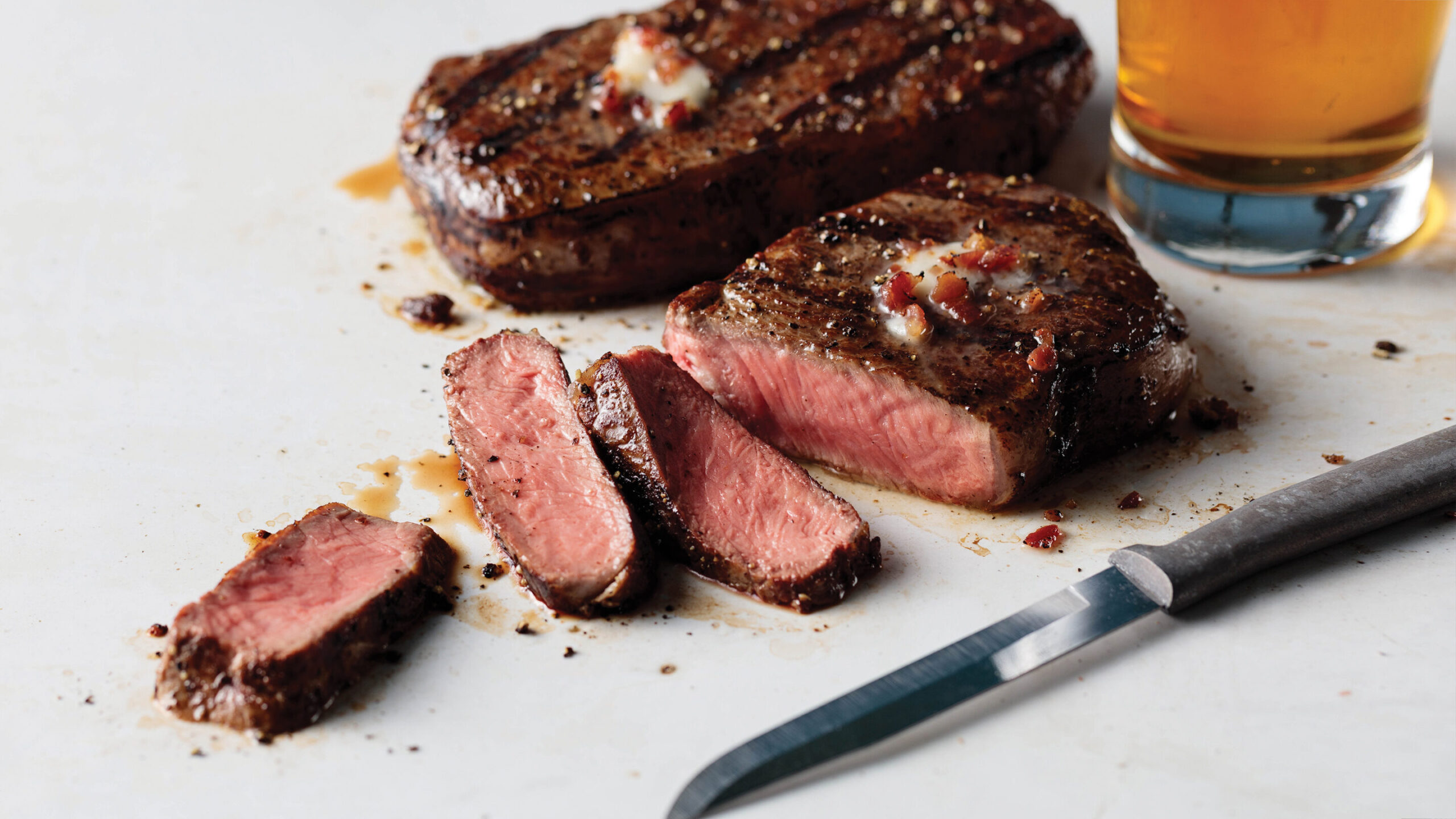
The Importance of Resting Meat
Resting your steak is essential for a few reasons:
- Juice redistribution: Allows the juices to redistribute throughout the meat, ensuring every bite is moist and flavorful.
- Continued cooking: The residual heat will continue to cook the steak slightly, often referred to as “carry-over cooking,” which can bring it to the perfect level of doneness.
- Improved texture: Gives the proteins time to relax, resulting in a more tender bite.
For filet mignon, a rest time of 5 to 10 minutes under a loose foil tent is ideal.
Serving Suggestions
When it comes to serving, presentation is just as important as preparation:
- Slicing: If you’re serving the filet mignon whole, ensure it’s beautifully plated. If slicing, do so against the grain for maximum tenderness.
- Accompaniments: Pair your steak with sides that complement its rich flavor without overshadowing it. Think grilled vegetables, a light salad, or a simple potato dish.
- Sauces: While filet mignon can certainly stand on its own, a drizzle of a complementary sauce like béarnaise or a red wine reduction can enhance its natural flavors.

Final Analysis
This is all about “ how long BBQ filet mignon”. In the journey of mastering the BBQing of filet mignon, remember that the true essence of cooking lies in the harmony between patience and passion. As you stand by the grill, let intuition guide your hand, and let the steak sizzle be the soundtrack to a culinary ballet.
Embrace the subtle cues from the meat, the grill, and the flames. Each filet mignon is a canvas awaiting your artistry, and with each sear and flip, you’re not just cooking; you’re creating memories. Trust in the quality of your ingredients, the precision of your tools, and the depth of your knowledge, for these are the pillars upon which the perfect BBQ is built.
Above all, cook not just to feed but to delight, share, and celebrate the simple yet profound joys that only a beautifully grilled filet mignon can bring to the table.

